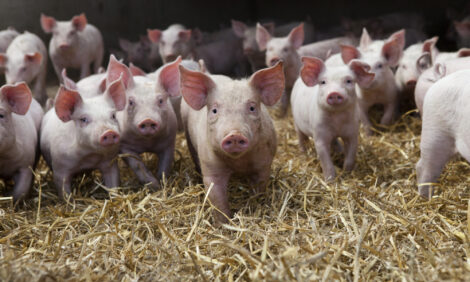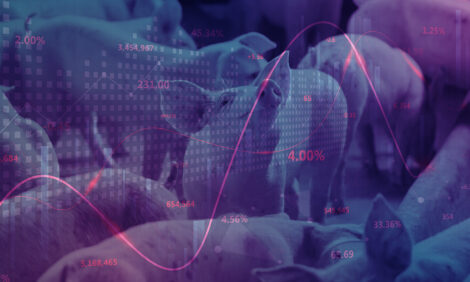



South Korea Pork Industry Overview, September 2004
By USDA Foreign Agricultural Service - This article provides the pork industry data from the USDA FAS Livestock and Products Annual 2004 report for the Korea. A link to the full report is also provided. The full report include all the tabular data which we have omitted from this article.Report Highlights
U.S. and Canadian beef have been banned from Korea since BSE cases were detected in each
country. Beef and poultry consumption in Korea has been undermined in recent months by
consumer food safety concerns. Accordingly, consumers have shifted to more pork and fish
consumption. The Korean pork industry and pork importers are positioned to prosper from
the current situation. Korean pork imports in 2004 and 2005 are expected to exceed 2003
levels by roughly 50,000 tons.
Korea began to export pork from a Korea island free from classical swine fever to Japan on
May 14, 2004. However, the trade volume is limited. Mainland Korea has vaccinated 96
percent of the swine herd against classical swine fever as of July 2004. In the meantime,
Korean swine producers enjoy a prosperous market in 2004 as a result of BSE and avian
influenza situations that have reduced consumption of beef and poultry products.
Swine and Pork
The swine industry has been enjoying historically high swine prices since cases of BSE were
detected in North America and outbreaks of avian influenza occurred in the countries that
were major poultry meat suppliers to Korea. Due to high domestic beef prices and low
confidence in country of origin labeling, consumers have substituted pork and fish for beef.
The Korean government’s efforts to vaccinate swine against classical swine fever (CSF) are
showing positive signs with 96 percent of the nation’s swine herd vaccinated as of July 2004.
Despite progress in battling CSF, Korean pork producers will not be able to resume exports to
Japan from the mainland anytime in the near future because the Japanese government
requires exporting countries to be free from CSF for one year from the last vaccination.
However, Japan has accepted Korea’s request to regionalize the ban on Korean pork exports
by allowing shipments from Jeju Island where no CSF outbreaks have been detected and no
CSF vaccination program has been conducted. As a result of the protocol, Jeju began to ship
small amounts of pork to Japan on May 14, 2004. Due to the small amount of production in
Jeju Island, significant exports to Japan will not take place until mainland producers are
allowed to export to Japan. Small amounts of Korean pork continue to be exported to Russia
and the Philippines.
The Korean Swine Association plans to spend 2.6 billion won (about US$ 2.25 million) in
2004 on promotional activities to increase the consumption of unpopular cuts by airing ads
on television and radio programs. Consumer substitution of pork for beef along with
aggressive promotion have increased pork consumption and reduced stocks. A survey
conducted by the Korea Meat Import and Export Association in August 2004 revealed that 64
percent of consumers order pork when dining out, which is higher than beef (25 percent),
poultry (9 percent) or fish (7 percent). However, when eating at home, the proportion of
pork consumption dropped to 43 percent, which is still higher than beef (26 percent), fish
(22 percent) or poultry (9 percent). This is probably due to the preference for grilling pork
which is difficult to do indoors at home. The same survey showed that the favorite pork cut
was bellies (55 percent) followed by bulgoggi (seasoned and marinated pork made mostly
from picnic or ham: 24 percent), collar butt (14 percent) and short ribs (6 percent).
Outbreaks of Porcine Epidemic Diarrhea (PED) and Post-weaning Multi-systematic Wasting
Syndrome (PMWS) during the period March-May, 2004 has caused a high loss of young
weaner pigs. PED and PMWS losses were much higher than the losses caused from CSF in
2003. Such losses, coupled with increased compound feed prices (9 percent increase in
January, 2004 followed by another increase of 9 percent in March, 2004) are offsetting the
incentive to increase the herd size caused by high swine prices. The Korean government’s
requirement to register all swine farms that have over 50 square meters of livestock growing
facilities by the end of 2004 is another factor limiting herd expansion. Farms subject to
registration must be equipped with pollution control facilities and meet certain minimum
space requirements per animal. Due to the costs associated with such facilities, only 3.9
percent of the 8,970 farms subject to the registration had registered as of mid-July. The
decision by the Korean government on when to lift the import ban placed on U.S. beef will
also influence pork consumption levels in 2004.
The Ministry of Agriculture & Forestry (MAF) plans to assist swine farmers by providing
support for 4 promotions in Japan. It has secured 120 million won (around US$ 100,000) for
this purpose in 2004. It has also set aside 45 million won (around US$ 39,000) for inviting
buyers from Japan, the Philippines, Mongolia and Russia. MAF will also provide low interest
loans for procuring swine for export purposes. A total of 37,590 million won (US$ 32.6
million) is budgeted for 2004 and will be used in procuring 300,000 head of hogs for the
export market. The loan conditions include an annual interest rate of 4 percent with full
repayment to be made after a one-year grace period. Other assistance to the swine sector in
2004 includes the following programs some of which also encompass the cattle sector:
Support for Branded Pork: The government plans to increase the total amount of pork that
is marketed under a brand name from the current level of 52 percent to 70 percent.
Direct Payments for Environment Friendly Livestock Farming:
Mandatory Livestock Registration:
Mandatory Record Keeping of Livestock Sales:
The Korea Chile Free Trade Agreement (FTA) went into effect April 1, 2004. One result of the
FTA has been that Korea has increased duty-free quota access for Chilean pork and reduced
duties on out-of-quota pork imports from Chile. Pork imports from Chile are projected to rise
from 3,387 MT in 2002 to 20,800 MT in 2004. Chilean pork exporters will have tariff-free
access to Korea for most cuts after the Chile-Korea FTA has been in effect for 10 years.
Korea and Chile will negotiate the tariff treatment for carcasses and half-carcasses under the
FTA after the end of the Doha Development Agenda negotiations.
To view the full report, please click here (PDF)
Source: USDA Foreign Agricultural Service - September 2004








